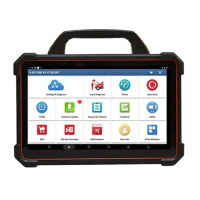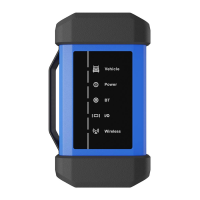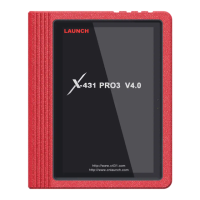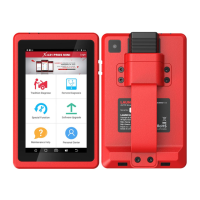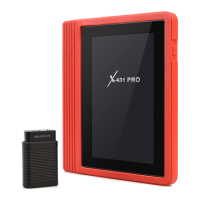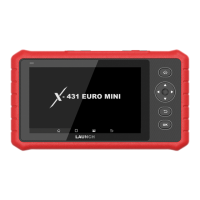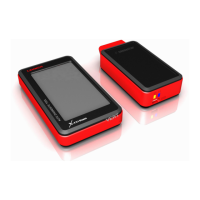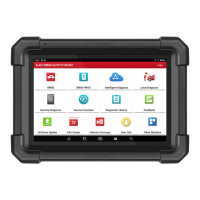56
LAUNCH PAD V
User's Manual
(2) Checking for the output signal of knock sensor
Unplug the wire connector of knock sensor, check voltage between
knock sensor connector terminal and ground wire of knock, it should
be output pulse voltage; otherwise, the knock sensor shall be
replaced.
Coolant temperature sensor testing
(1) Resistance test for coolant temperature sensor
On vehicle testing:
Switch ignition “OFF” and unplug the wire connector of coolant
temperature sensor, then use the “Resistance measurement” to test
the Resistance between two terminals of sensor. The relationship
between the resistance and the temperature is in inversely proportion
(negative temperature coeffi cient), which shall be less than 1kΩ during
warming up.
Independent testing:
Unplug the wire connector of coolant temperature sensor, then remove
the sensor from the engine; place the sensor into a breaker with water
and heat the water, then use the “Resistance measurement” to test
the Resistance between two terminals of coolant temperature sensor
at different water temperature. Compared the measured value with the
standard value, if the Resistance is not compliant with the standard,
then the coolant temperature sensor shall be replaced.
(2) Output signal voltage testing for coolant temperature sensor
After installing the coolant temperature sensor, plug the wire connector
of sensor, and then switch ignition ON, test the output signal voltage
between the two terminals of wire connector. The tested voltage shall
be in inverse proportional with the coolant temperature. When the
harness of coolant temperature sensor is disconnected, the voltage
shall be about 5V if the ignition switch is ON.
7.2 Battery Tester (V1.0, Optional)
7.2.1 Product Summary
The tablet provides an optional function of automotive battery
test, which adopts the latest state-of-the-art conductance testing
technology in the world and can test vehicle’s battery status. Two
testing environments (Inside the Vehicle and Outside the Vehicle)
are available and applicable to battery test. In addition to battery test,
charging system and actuation system test can be done while Inside
the Vehicle is selected.
It supports various battery standards and specifications, including
CCA, DIN, IEC, EN, JIS, SAE and GB etc. It is specifi cally designed
to help car owner, repair workshop, battery factory use battery test
instrument properly and determine whether the battery is normal or
not.
Battery test aims to check starting plumbic acid storage batteries for
vehicles, ship, boats and aviations, etc. It can test all kinds of batteries
complying with CCA, DIN, JIS, EN, GB and SA standards. For detailed
test standards, see the following table.
Standards Standard (Full name) Test capacity range
CCA Battery Council International 100
~
1700
DIN Deutsche Industry Normen 100
~
1200
JIS Japanese Industry Standard 26A17
~
245H52
EN Europe Norm 100
~
1700
IEC National Electrical Commission 100
~
1200
GB Chinese National Standard 100
~
1200

